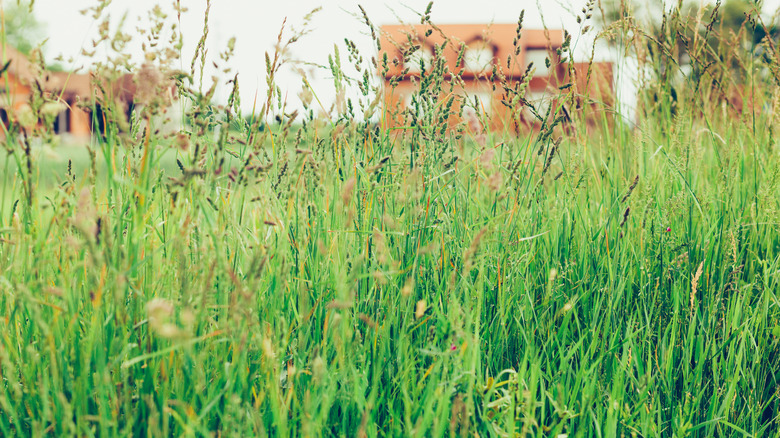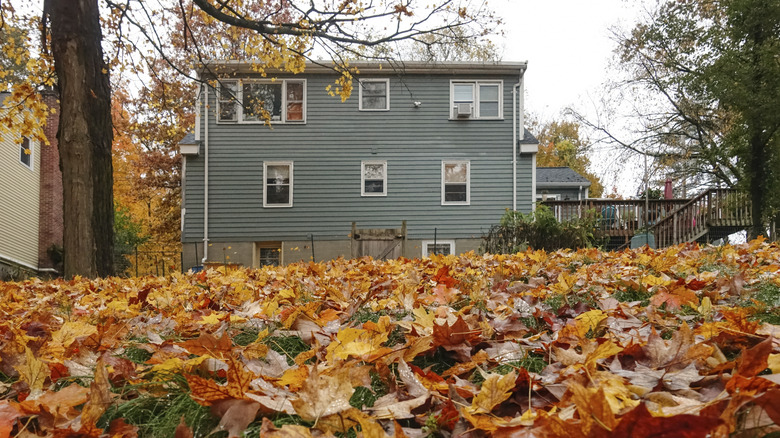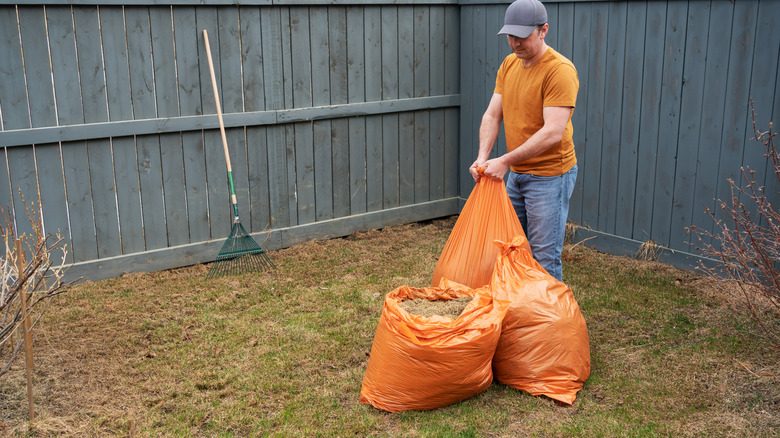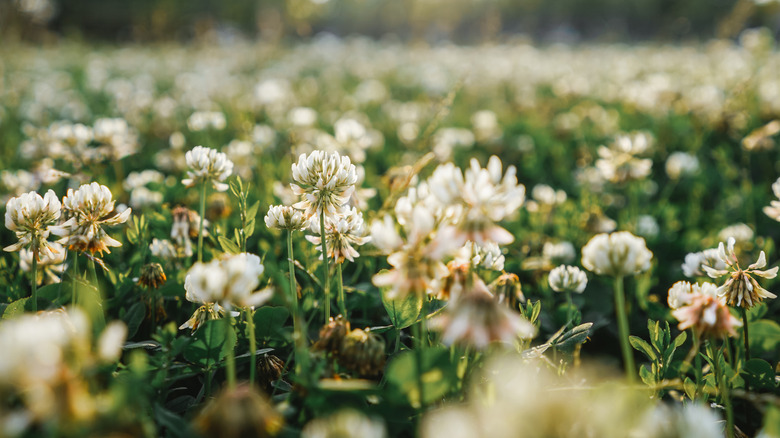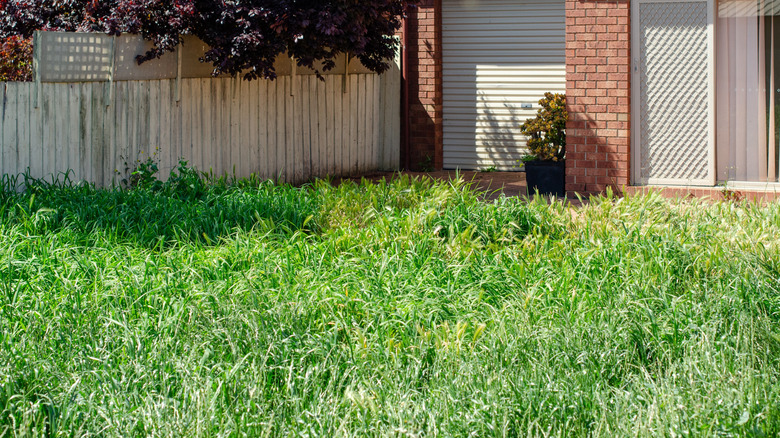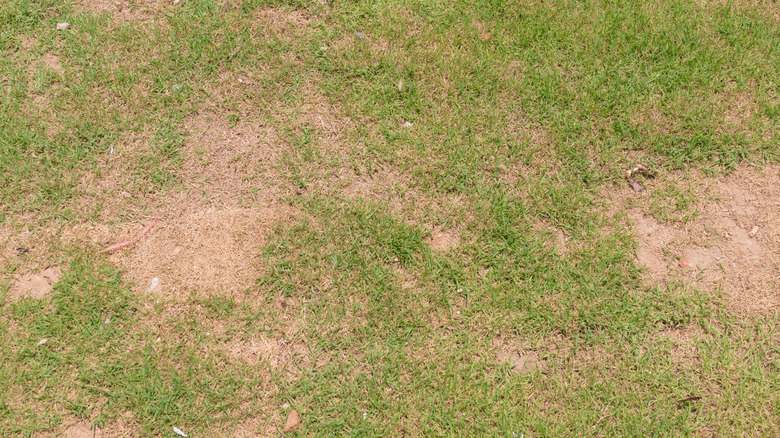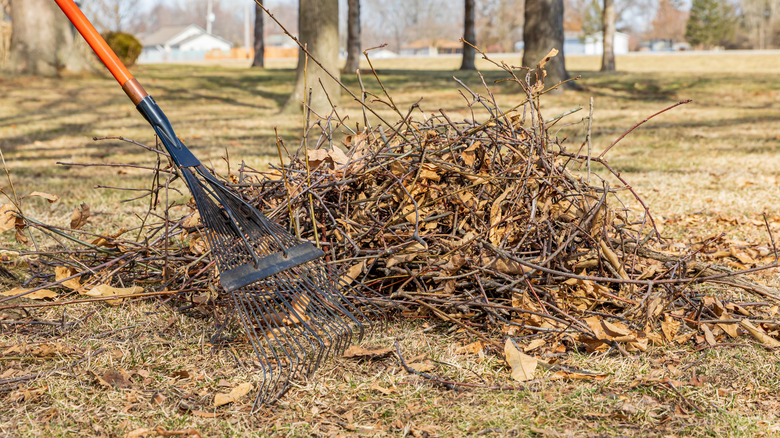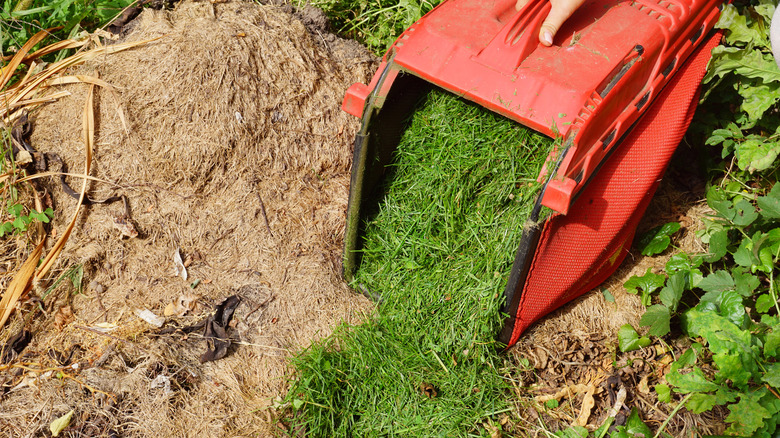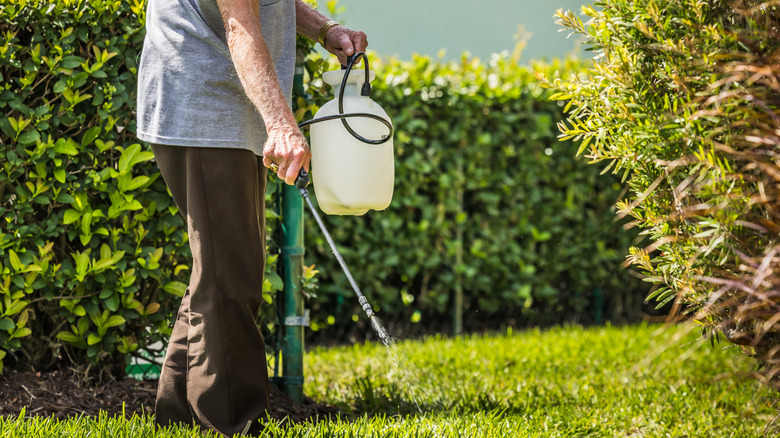Lawn Habits That Look Messy But Help Pollinators Thrive
We may receive a commission on purchases made from links.
Bees, butterflies, and other pollinators serve a very important function. Without them, many of the foods we rely on would not grow. Over three-quarters of flowering plants need to be pollinated in order to produce flowers and fruit. Without pollinators taking care of this essential task, our food supply would be reduced. Moreover, the entire food chain would be disrupted, as many animals rely on plants to survive. Pollinators do more than just help ensure fruits, vegetables, and other crop plants are able to supply. The essential function they perform also helps protect the environment, minimizing soil erosion, removing carbon dioxide from the air to minimize the effects of climate change, and more.
Unfortunately, many of our pollinators are endangered and facing threats to their nesting locations. They're having a more challenging time finding the food they need to survive and are increasingly being threatened by diseases, pesticides, and the changing climate. While you may personally not be able to enact policy changes to protect pollinators, there are some things you can do with your lawn to help them thrive. While many homeowners desire a perfectly manicured lawn, some "messier" lawn habits can actually make your yard a safe haven for birds, butterflies, and other pollinators. Read on to discover how a few changes to your lawn care routine could have a big positive impact on local pollinators.
Skipping fall leaf clean up can provide a spot for pollinators to overwinter
While leaving dead and crumbling leaves on your lawn isn't what anyone pictures when thinking about a manicured lawn, the practice can support pollinators. Those fall leaves provide an important place for many pollinating insects and animals to overwinter during the colder months. Without this leaf cover, they may not survive through the winter. For example, after luna moths form their cocoons in an oak tree, they drop to the ground. There, they stay protected by the fallen leaves until they're ready to emerge during the spring or summer. Without those leaves, their chance of survival are greatly decreased. Moreover, if the insects are already hiding in the leaves when you go to rake or blow them, you could inadvertently kill them.
While you may want to let the leaves lie where they fall, that may not always be possible. Whether the layer of leaves is so thick that you are worried about it smothering the lawn in the spring, or your Homeowners' Association (HOA) has a policy about maintaining a well-kept lawn, you can still help support the pollinators that are in — or may visit — your yard. Instead of removing the leaves completely from the lawn, rake them into piles or use them to mulch garden beds. Letting the leaves remain on your property offers additional benefits, too. They'll act as a natural fertilizer, delivering organic matter and nitrogen to support a healthy lawn and garden. Wherever you decide to place the leaves, make sure that you don't shred them first — doing so could kill the insects that already call the leaves home.
Cleaning your yard later in spring protects hibernating pollinators
Once the warm weather starts creeping in, everyone is in a rush to get their lawns cleaned up and ready for spring. Spring cleanup typically involves removing remaining leaves, clearing away sticks and twigs that dropped over the winter, and pruning shrubs and trees. However, if you start spring cleaning too early, you won't be doing pollinators any favors. In fact, you could even threaten their chances of survival. Remember all those insects that sought cover in the fallen leaves in the fall? Chances are, many of them are still hiding there as winter gives way to spring. Others, such as carpenter bees, may be nesting in dead wood. Similarly, some caterpillars may have formed their chrysalis on the twig of a bush or a tree. If they're not ready yet to emerge as a butterfly, pruning that twig off would be disastrous.
Don't worry, you can still perform spring cleanup tasks. However, you'll want to wait until a bit later in the season. The ideal amount of time to delay your cleanup varies depending on where you live and the weather conditions. Even if the daytime temperatures are high enough, the nights may still be cold (and even drop below freezing at times). Many pollinators wait until the weather is consistently warm before they'll come out of their winter hibernation. If you've noticed that the grass has started to grow and haven't had a need for your winter hat and gloves, then pollinators have likely emerged from their winter shelter. At this point, you should be able to proceed with your spring yard cleanup.
Allowing clover to grow in your lawn can provide additional food for pollinators
Clover is a weed that can seemingly take over your lawn in no time. The more it grows, the messier your lawn will look. For that reason, many people act quickly to get rid of clover in their yard. However, there are some things to consider before getting rid of clover if you want to support pollinators. Clover can bloom for several weeks, providing a lasting food source for bees and other pollinators that stop by. Resisting the temptation to kill clover (and other lawn weeds) offers additional benefits as well. The weed is more drought resistant than grass and performs better in shaded areas. These qualities help your lawn stay greener and more vibrant even under less-than-ideal circumstances. Plus, allowing these weeds to grow freely eliminates the need to apply herbicides. Beyond killing unwanted plants, herbicides also threaten pollinators. For example, glyphosate prevents butterfly eggs from hatching successfully and interferes with bees' ability to navigate.
There are a few things to consider if you're looking to create a clover lawn. First, these lawns come in different types, including those where the weed is allowed to grow freely and those where all of the turf grass is killed, and clover is planted in its place. While you might think that a clover-only lawn offers the most benefits for pollinators, that's not always the case. Most clovers that are used as lawn cover are non-native plants that don't offer pollinators the same nutritional benefits as native species do. If you decide to let native clover grow on your lawn and find that it's spreading too much, you can always weed some out to better balance the lawn. Hand-pulling is an effective weeding method for clover — and one that doesn't subject pollinators to harmful chemicals.
Letting your grass get tall offers pollinators extra food and habitat
Lawns with tall grass are often considered messy and unmanicured. Many people mow grass once per week (or even more frequently) to keep it from getting so tall that it makes their yard look disastrous. However, if supporting pollinators is important for you, you might be willing to sacrifice aesthetics in favor of a more pollinator-friendly landscape. Less frequent mowing enables clover to flower, as mentioned above. Other pollinator magnets, such as native violets and dandelions, can also be found in lawns that are allowed to grow taller.
When left unmowed for long enough at the right time of the year (late spring to early summer for cool-season grass and late summer to early fall for warm-season grasses), the turf itself will also flower, providing additional food for pollinators. Tall grass can also serve as a habitat for certain insects, such as fiery skipper butterflies. The larvae of this species feeds on the grass and uses it as shelter.
Leaving bare, sparse patches in your lawn provides a habitat for ground-nesting bees
Letting your grass grow tall supports many pollinators. So, you might start looking for a simple solution for filling in those patchy spots in the yard. However, before you seed those bare patches, or let your entire turf grow tall, consider which pollinator species frequent your yard or nest in it. This information will let you determine whether keeping all the grass tall is helpful for the various pollinators who call your yard home. For example, certain types of beneficial bees, like mining bees or digger bees, actually seek out bare or patchy soil with short grass for their nests. If you fill in all the shorter patches of grass and bare soil, sure, your lawn will look less messy, but you'll deprive these pollinators of their ideal nesting conditions.
So, leave those bare patches alone and continue to mow some of the grass short, even as you let most of the lawn grow unimpeded. However, you should aim to mow later in the day after the bees have returned to their underground nests for the night. To further protect the bees, avoid tilling the soil.
Creating brush piles with fallen branches from your lawn helps house pollinators
Most people would not view piles of brush as an attractive addition to a lawn. However, purposefully adding this "mess" to your yard is another way you can help pollinators survive. When you use fallen branches to make brush piles, you provide certain pollinators with the ideal nesting conditions. Nearly one third of native bees are considered cavity nesters. Instead of creating a beehive, they turn brush piles or dead and hallowed wood into shelter. Leaf cutter and mason bees are two examples of cavity nesting pollinators you could support by adding brush piles to your yard.
If you want to minimize the messiness caused by brush piles, situate them in less conspicuous parts of the yard — out of sight, in far corners. However, be sure to choose a spot that gets ample sunlight if you want to encourage bees to see the piles as suitable nesting grounds. Just keep in mind that certain cavity-nesting bees, such as bumblebees, may not find your man-made brush pile up to their standards — they'll often choose to turn an old rodent nest into their new home instead.
Compost lawn clippings on-site instead of discarding them
A compost pile (especially an open one) is not the most aesthetically pleasing thing you could add to your yard. However, there are several benefits of composting at home, including support for pollinators in the yard. First, amending the soil in your garden with compost can make it more fertile. The added nutrients will help flowers grow and produce vibrant blooms to attract and benefit the pollinators.
Using compost instead of traditional wood mulch will also help pollinators, particularly the ground-nesting species that need direct access to the soil. At the same time, composting keeps food scraps out of landfills, which in turn reduces the release of greenhouse gases (such as methane) into the air. Greenhouse gases are a threat to pollinators, so by making a home compost pile, you'll be doing your part to protect them — and the environment as a whole. There are several materials that you can compost. Your compost bin is begging for those leftover grass clippings, for one. These clippings, along with vegetable and fruit scraps and coffee grounds, are considered "greens," which are high in nitrogen. These greens should be balanced with more carbon-rich "browns," such as dry leaves, shredded paper, and twigs.
Delay (or omit) pesticide applications to avoid killing pollinators
Some pests can really make your lawn look messy and unappealing. For example, if there are grubs in the soil, they can kill patches of grass, leaving you with potentially large brown spots across the lawn. When you're facing a challenge like this, it can be tempting to spray your lawn with a pesticide and simply kill the insects. However, while this helps you get rid of the unwanted pests, pesticide applications can also have the unintended consequence of killing the pollinators you want to protect.
Applying pesticides during early spring is especially harmful to pollinators. If you'll remember, some pollinators wait until temperatures rise before leaving their winter nests. At a minimum, consider waiting until late May or June before applying a chemical treatment to your lawn. The delay gives those later-to-emerge pollinators more time to come out of their nests and get out of harm's way. Forgoing the use of chemical pesticides on the lawn is even better. Instead, you can try a natural treatment, such as using beneficial nematodes, to kill pests. NaturesGoodGuys Triple Blend Beneficial Nematodes and other similar products can help you get rid of grub worms, weevils, beetles, and cutworms.
